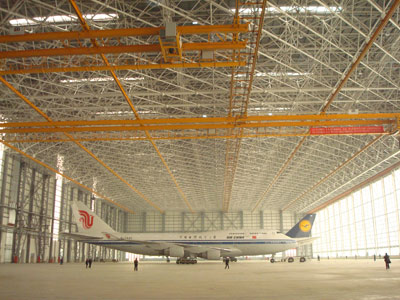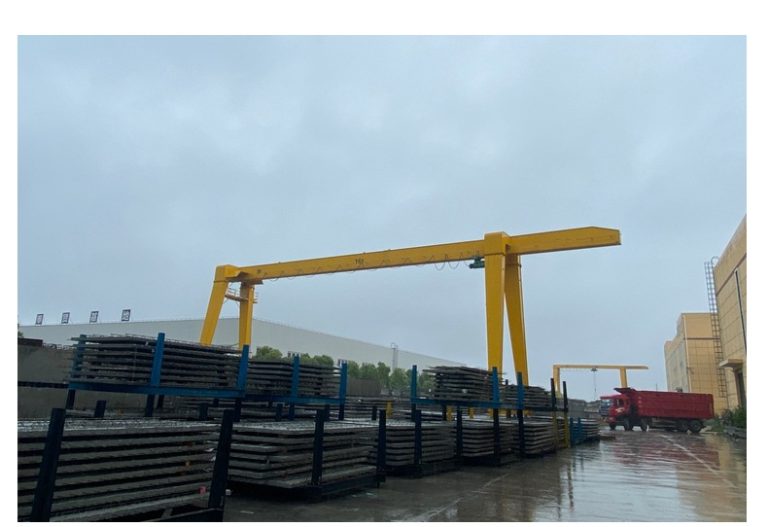Table of Contents
Benefits of Using Advanced Lifting Equipment for Port Operations
Ports are essential hubs for global trade, serving as gateways for goods to be transported across the world. With the increasing demand for efficient and safe handling of cargo, the use of advanced lifting equipment has become crucial for port operations. Suppliers of lifting equipment play a vital role in providing ports with the tools they need to streamline their operations and improve productivity.
One of the key benefits of using advanced lifting equipment in ports is increased efficiency. With the ability to lift and move heavy cargo quickly and safely, ports can significantly reduce turnaround times for ships and trucks. This not only improves the overall flow of goods through the port but also helps to minimize delays and congestion, ultimately saving time and money for both port operators and shipping companies.
In addition to efficiency, advanced lifting equipment also enhances safety in port operations. By utilizing state-of-the-art technology such as automated cranes and sensors, ports can minimize the risk of accidents and injuries during cargo handling. This not only protects the well-being of port workers but also helps to prevent damage to valuable cargo, reducing the likelihood of costly insurance claims and legal disputes.
Furthermore, advanced lifting equipment offers ports greater flexibility in handling a wide range of cargo types. Whether it’s containers, bulk materials, or heavy machinery, modern lifting equipment can be customized to meet the specific needs of each port operation. This versatility allows ports to adapt quickly to changing market demands and handle a diverse range of cargo efficiently and effectively.
Another significant benefit of using advanced lifting equipment in ports is improved environmental sustainability. By utilizing energy-efficient technologies and reducing emissions from diesel-powered equipment, ports can minimize their carbon footprint and contribute to a cleaner and greener environment. This not only aligns with global efforts to combat climate change but also helps ports to comply with increasingly stringent environmental regulations.
Moreover, advanced lifting equipment can also enhance the overall competitiveness of ports in the global market. By investing in cutting-edge technology and automation, ports can attract more shipping companies and increase their throughput capacity. This, in turn, can lead to higher revenues and greater economic growth for the port and the surrounding community.
In conclusion, the benefits of using advanced lifting equipment for port operations are clear. From increased efficiency and safety to greater flexibility and environmental sustainability, modern lifting equipment offers ports a wide range of advantages that can help them thrive in today’s competitive global trade environment. Suppliers of lifting equipment play a crucial role in providing ports with the tools they need to stay ahead of the curve and meet the demands of the modern shipping industry. By investing in advanced lifting equipment, ports can improve their operations, enhance their competitiveness, and contribute to a more efficient and sustainable global supply chain.
How to Choose the Right Supplier for Lifting Equipment in Ports
Lifting equipment plays a crucial role in the operations of ports around the world. From loading and unloading cargo to moving heavy containers, having the right equipment is essential for ensuring efficiency and safety. When it comes to choosing a supplier for lifting equipment in ports, there are several factors to consider to ensure you are getting the best quality products that meet your specific needs.

One of the first things to consider when choosing a supplier for lifting equipment in ports is the reputation of the company. Look for suppliers who have a proven track record of providing high-quality equipment that meets industry standards. You can research online reviews and testimonials from other customers to get an idea of the supplier’s reputation. Additionally, you can ask for references from the supplier and reach out to other port operators who have worked with them in the past to get feedback on their experience.
Another important factor to consider when choosing a supplier for lifting equipment in ports is the range of products they offer. Different ports have different needs when it comes to lifting equipment, so it’s important to choose a supplier that offers a wide variety of products to choose from. Whether you need cranes, forklifts, or other types of lifting equipment, make sure the supplier has the products you need to meet your specific requirements.
| No. | Name |
| 1 | General purpose bridge crane |
| 2 | Semi – gantry Crane |
| 3 | European-style crane |
| 4 | Harbour crane |
In addition to the range of products offered, it’s also important to consider the quality of the equipment provided by the supplier. Look for suppliers who work with reputable manufacturers and offer equipment that is built to last. High-quality equipment will not only perform better but will also require less maintenance and repairs, saving you time and money in the long run.
Cost is another important factor to consider when choosing a supplier for lifting equipment in ports. While it’s important to find a supplier that offers competitive pricing, it’s also important to consider the overall value of the equipment. Cheaper equipment may save you money upfront, but if it requires frequent repairs or replacement, it could end up costing you more in the long run. Look for suppliers who offer a good balance of quality and affordability to ensure you are getting the best value for your money.
When choosing a supplier for lifting equipment in ports, it’s also important to consider the level of customer service provided. Look for suppliers who are responsive to your inquiries and provide support throughout the purchasing process. A supplier who is willing to work with you to find the right equipment for your needs and provide ongoing support after the sale is essential for ensuring a positive experience.
In conclusion, choosing the right supplier for lifting equipment in ports is essential for ensuring the efficiency and safety of your operations. Consider factors such as reputation, range of products, quality, cost, and customer service when making your decision. By taking the time to research and evaluate potential suppliers, you can find a partner who will provide you with high-quality equipment that meets your specific needs.






